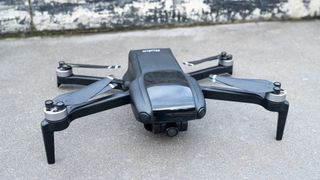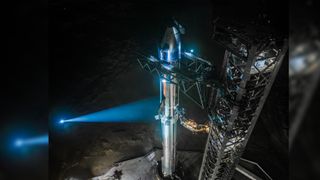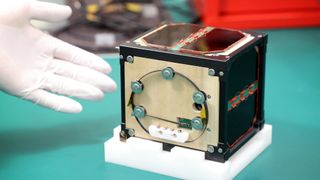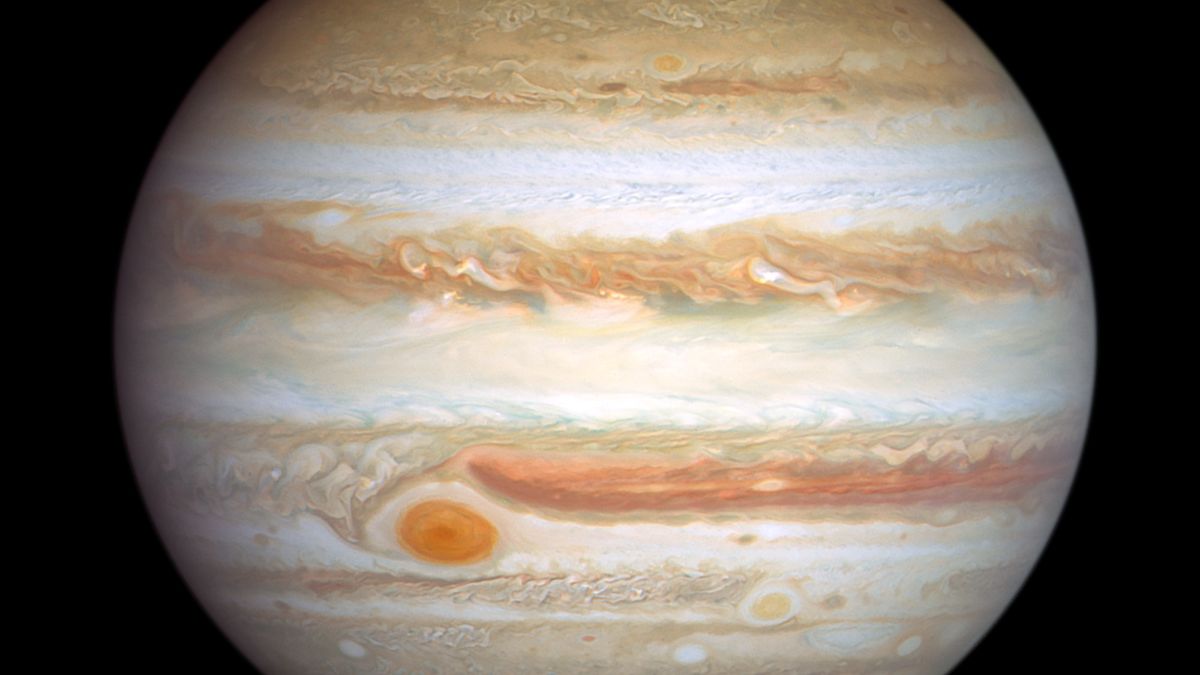Ruko drones are popular options for beginners, and the Ruko U11MINI is a sub-250 g model that weighs just 8.29 oz / 235 g — one of the lighter drones in this popular category. With some impressive drones released in 2024, the U11MINI does not qualify as one of the best beginner drones because competition in this category has seriously heated up, but it remains an option to consider. Key Specs Weight: 8.29 oz / 235 g Dimensions: 5.55×3.42×2.44 in / 141x87x62 mm folded / 12.71×10.67×2.44 in / 323x271x62 mm…
Read MoreCategory: Solar System
Our solar system
‘Dune: Prophecy’ showrunner and Harkonnen stars dissect a stellar first season (exclusive)
HBO’s “Dune: Prophecy” aired its eventful season finale on Dec. 22, right before Christmas bells rang, and it was a satisfying end to this spinoff series set 10,000 years before Paul Atreides’ birth and concerned the rise of the Bene Gesserit sect. With the Sisterhood’s thinking machine smashed to bits, Emperor Corrino putting himself out of his misery, Tula embracing her enhanced son Desmond Hart, and Valya finally touching down on Arrakis in the sixth episode titled “The High-Handed Enemy,” many loose narrative ends and inevitable fates were all tied…
Read MoreWhat time is SpaceX’s Starship Flight 7 launch test on Jan. 13?
SpaceX is ready to launch its first Starship flight of 2025, a mission that will test a new version of the world’s largest rocket. But if you’re hoping to watch the planned Jan. 13 launch live online, you’ll need to know when and where, and for that we’ve got you covered. After a successful fueling test late Friday, Jan. 10, SpaceX is on track to launch its Starship Flight 7 mission at 5 p.m. EST (2200 GMT) on Monday, Jan. 13, from the company’s Starbase facility near Boca Chica Beach…
Read MoreSpace2Sea Antarctica: 2 Ukrainian soldiers fulfill 1st part of Antarctic dream
Space2Sea Antarctica marks the inaugural voyage in a series produced by FUTURE of SPACE (FoS). This innovative journey blends Earth’s uncharted territories with the inspiring narrative of human curiosity and exploration. It encapsulates the core mission of FoS to: Embrace New Frontiers, Celebrate the Human Experience, and Elevate the Conversation. Student journalist Gabe Castro-Root of American University is chronicling the mission for FoS. You can read his latest dispatch below. By the beginning of 2025, Valeriia Subotina and Mariia Chekh will be back at war. The two Ukrainian soldiers have…
Read MoreMars is bigger and brighter this weekend than it will be all year. Here’s how to see it
Mars will make its closest approach to Earth this weekend while rising to its highest point in the night sky. On Sunday (Jan. 12), the Red Planet will make its close approach of Earth at 8:32 a.m. EST (13:32 GMT). This event, known as perigee, causes Mars to appear bigger and brighter in the sky than usual, offering skywatchers an excellent viewing opportunity, according to In-the-Sky.org. Mars will be visible from New York City beginning around 5:43 p.m. EST (2243 GMT), when it reaches an altitude of 7 degrees above…
Read MoreWorld’s 1st wooden satellite deploys from ISS to demonstrate cleaner spacecraft tech (photo)
An experimental satellite made of wood has been deployed from the International Space Station (ISS) to test how the renewable, sustainable material withstands the harsh orbital environment. The satellite, designed and built by Kyoto University and Japanese wood processing company Sumitomo Forestry, is called LignoSat, a reference to the organic polymer lignin, which is prevalent in wood cells. The 1U cubesat — a cube measuring 4 inches (10 centimeters) on a side — will remain in space for about six months before it gets pulled back into Earth’s atmosphere by…
Read MoreOpticron Explorer WA ED-R 8×42 monocular review
The Opticron Explorer 8×42 is packed with premium features that are typically found in much more expensive monoculars. It boasts not only BAK-4-coated prisms for superior image clarity but also ED-R-coated glass with Opticron’s latest high-light transmission coating. With a wide, 7.5-degree field of view and a wide-angle eyepiece offering long eye relief for people who wear glasses, this monocular ensures an immersive viewing experience. The multistage, retractable eyepiece features a pleasant and damped action to accommodate both spectacle and non-spectacle wearers with ease. We found the focus wheel to…
Read MoreAn amateur astronomer used an old technique to study Jupiter — and found something strange
Scientists and amateur astronomers have teamed up to upend a long-held assumption that Jupiter’s iconic swirling clouds are made of frozen ammonia — a pretty foundational revelation about the gas giant we thought we knew well. Using commercially available telescopes and spectral filters, an amateur astronomer named Steve Hill collected data to map the abundance of ammonia in Jupiter‘s atmosphere, but Hill ultimately found something that contradicted previous models of the gas giant’s atmospheric composition to begin with. “I was intrigued!” Patrick Irwin from the University of Oxford told Space.com.…
Read MoreSpaceX rolls Starship out to pad ahead of Flight 7 test launch (photos)
SpaceX is gearing up for the next test flight of its Starship megarocket, which is just a few days away. The company rolled Starship‘s 165-foot-tall (50-meter-tall) upper stage — known as Starship, or simply “Ship” — out to the launch pad at its Starbase site in South Texas this morning (Jan. 9). SpaceX founder and CEO Elon Musk announced the milestone in a post on X. That update featured four photos of the move, which occurred during predawn hours. Another shot of the 165-foot-tall (50 m) spacecraft on the move.…
Read MoreSpaceX to launch Starship megarocket’s Flight 7 test mission on Jan. 13
SpaceX’s Starship will fly for the seventh time ever early next week, if all goes according to plan. SpaceX announced today (Jan. 8) that it’s targeting Monday (Jan. 13) for Flight 7 of Starship, the 400-foot-tall (122 meters), fully reusable megarocket designed to help humanity settle the moon and Mars. Starship is scheduled to lift off Monday at 5 p.m. EST (2200 GMT) from Starbase, SpaceX‘s manufacturing and launch site in South Texas. You’ll be able to watch the action live; the company will webcast the flight beginning about 35…
Read More







